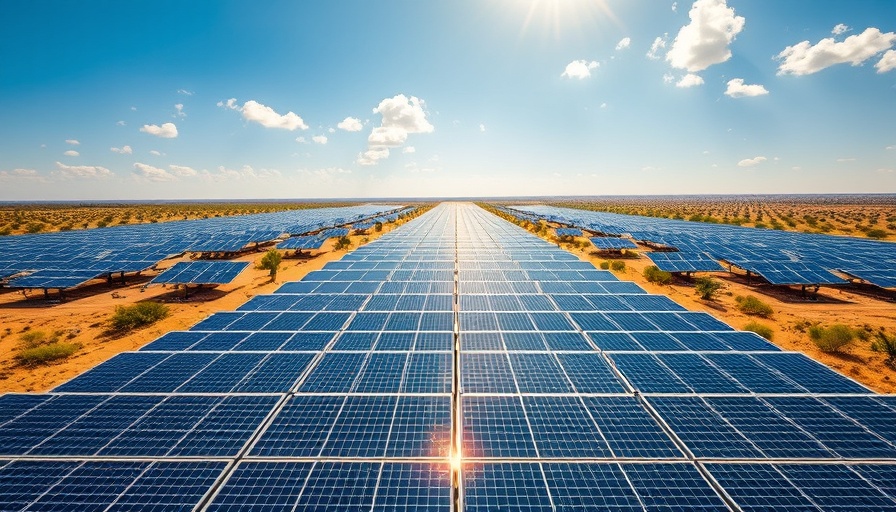
The Rise of Renewables in Australia: A Game Changer
Australia has officially entered a new era of energy generation. As reported by the Australian Energy Market Operator (AEMO), the first quarter of 2025 saw a staggering 43% of electricity produced across the Australian Capital Territory and five eastern states derived from renewable sources, marking a historic high in the National Energy Market's 25-year journey. This achievement underscores the continuing shift away from polluting fossil fuels, as renewables, particularly solar and wind, dominate the energy landscape.
The Data Behind the Numbers
According to the AEMO's Quarterly Energy Dynamics Report, grid-scale solar generation has increased by 10% compared to last year, while battery outputs surged an impressive 86%. The latter statistic speaks volumes about Australia’s commitment to harnessing energy storage as a critical component of its renewable infrastructure.
Meanwhile, rooftop solar installations and wind energy efforts also reached record highs, with increases of 16% and 18% respectively. This surge can be attributed partially to the growing number of Australian households adopting solar energy systems — over four million homes are now equipped with these eco-friendly installations. It is clear that Australians are embracing a path toward sustainability and energy independence.
Environmental Implications of Renewable Energy Growth
One of the most significant impacts of this shift is the reduction of climate pollution from the electricity grid. The first quarter of 2025 recorded the lowest carbon emission levels Australia has seen, with carbon pollution down 5% compared to the same period last year. Greg Bourne, a Climate Councillor and energy expert, noted the important role that renewables play in driving down emissions and securing a cleaner future for generations to come. The larger message is simple: renewables are not just viable; they are essential for meeting environmental standards and creating a sustainable society.
Shifting Perspectives on Gas Use
Interestingly, as renewables flourish, gas usage has decreased by 8.3%, even as gas prices reached new heights on the east coast. Experts suggest this trend reflects a larger shift in the energy market where the role of gas continues to diminish. Bourne remarked, "Australians should be clear that the role of gas in our energy system is small and continues to shrink." It seems the transition to renewables is not just emerging, but decisively taking the spotlight.
Future Trends: What Lies Ahead for Australia’s Renewable Energy?
Looking forward, experts believe that the recent slowdown in large-scale renewables expansion may soon come to an end. To reach the Albanese government’s target of 82% renewables by 2030, acceleration is key. Analyst Johanna Bowyer mentioned how renewables, particularly during peak sunlight hours, contributed to negative or zero wholesale electricity prices 18% of the time. This growing trend presents clear economic benefits as well as supports the case for increased investment in renewable energy technology.
A Collective Power Shift: Community and Personal Responsibility
For millennials and young families aged 25-45, the transition to renewable energy is not only a technical shift but a personal one. Communities across Australia are welcoming this change, as many individuals are feeling empowered to contribute to a greener future. The shift to renewable energy presents an opportunity for people to align their lifestyle choices with their values of sustainability and wellness. The embrace of renewables goes beyond economic feasibility; it becomes a shared responsibility toward the planet.
Conclusion: Embrace the Eco-Energy Revolution
The significant rise in renewables within Australia is not just a statistic; it's a signal of a profound change. As we witness cleaner, more reliable energy sources take over, the collective consciousness about our energy choices is sharpening.
With this bright future unfolding, what role will you play in the renewable energy revolution? Consider how your household can contribute to this exciting shift toward a cleaner environment. Let’s engage in conversations about renewable energy initiatives in our communities and support policies that embrace sustainability.
 Add Row
Add Row  Add
Add 




Write A Comment